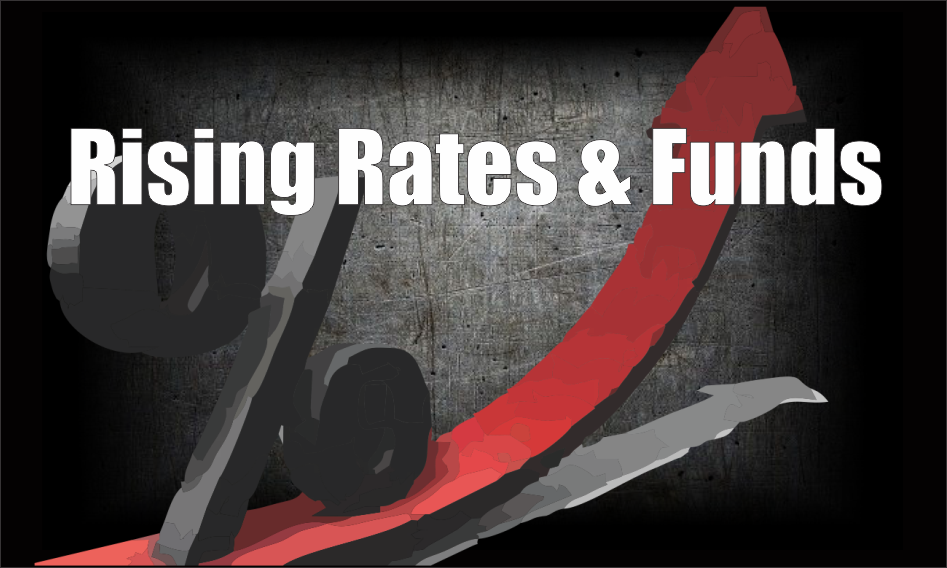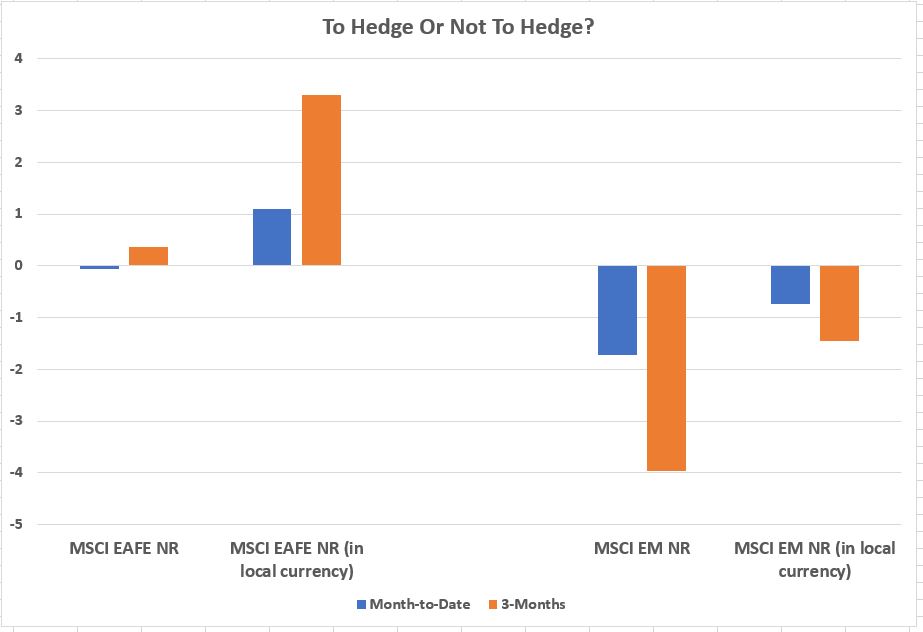Rising Rates And Funds

There’s always something else to worry about. For a while now, investors we admire such as Grantham, Mayo, van Oterloo (GMO) and Research Affiliates have been touting the cheapness of foreign stocks, especially emerging markets stocks. This past August James Montier of GMO argued that an allocation to the S&P 500 Index, given its valuation then, counted more as speculation than as an investment. Also, in November, Research Affiliates published a paper questioning whether anyone needed U.S. stock exposure.
Valuations of foreign stocks are indeed more compelling than those of their U.S. counterparts. But U.S. investors must account for other things when venturing abroad, including currency moves. When U.S. investors own a foreign stock that trades on a U.S. exchange, they receive two returns, the return of the stock in its local currency and the movement of the local currency relative to the U.S. dollar. In other words, U.S. investors take on foreign currency exposure when they own foreign stocks. Lately, that has provided some pain as the dollar has surged thanks to rising interest rates. From the lows of this year in February, the U.S. dollar has surged more than 4% against a basket of foreign currencies.

And that means investors in foreign stock have suffered, though those stocks have not necessarily performed badly in their local currencies. For example, the MSCI EM Index has dropped 1.72% and 3.97% over the past month-to-date and three month periods, respectively, through May 9, 2018, when translated into dollar terms – in other words, for ordinary U.S. investors without a currency hedge. But in local currency, over the same two time periods, the same index has dropped only 0.73% and 1.46%, respectively.
In the realm of developed markets, the MSCI EAFE Index has delivered a month-to-date and three-month return through May 9, 2018, of -0.07% and 0.37%, respectively, when translated to the dollar. But it has delivered 1.10% and 3.29%, respectively, to investors with a hedge, thanks to the strengthening dollar and weakening foreign currencies.

Currency moves are hard to time, and that means most investors like to stay unhedged or hedged at all times. Is there one of these that’s better? A paper by asset manager AQR argues that, over time, investors haven’t gotten paid for the volatility they’ve incurred from foreign currency exposure. The lesson for long-term U.S. Investors is to hedge their currency exposure. That makes some sense because while currencies move up and down against each other over long periods of time, those moves tend to cancel each other out. There’s no long-term gain to be captured from a currency bet.
Now, despite the dollar’s run lately, the greenback looks relatively high versus a foreign basket of currencies over a longer period of time. In that case, foreign currency exposure might actually help. So if investors are expecting the dollar to fall over a longer period of time, they can hedge some prearranged percentage of their foreign stock portfolio.
Some instruments with which investors can gain hedged currency exposure to foreign stocks are the Xtrackers MSCI EAFE Hedged Equity ETF (DBEF ) and the xTrackers MSCI Emerging Markets Hedged Equity ETF (DBEM). The first gains exposure to the MSCI EAFE with a currency hedge, and the second gains exposure to the MSCI EM Index with a currency hedge.
May I Please Have Some Yield?
Apart from the esoteric realm of currency hedging, rising rates have also caused rates to, well, rise on short-term debt funds. And that can be a boon to investors – especially those with a penchant to ride out expensive markets with at least some of their money in cash. PIMCO’s Enhanced Short Maturity Active ETF (MINT ) might be a decent choice for safety with some yield. It owns high-quality short-term debt instruments (Effective Maturity – 0.61 years), including both sovereign and corporate debt, and its current yield is 2.18%. Not all the instruments are from the developed world, and the fund can take a bit more risk than the average money market fund. But the fund doesn’t use options, futures, or swaps and discloses its holdings on a daily basis.



